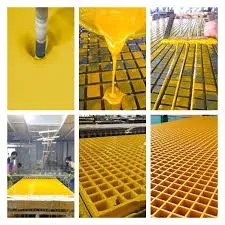
-
 Afrikaans
Afrikaans -
 Albanian
Albanian -
 Amharic
Amharic -
 Arabic
Arabic -
 Armenian
Armenian -
 Azerbaijani
Azerbaijani -
 Basque
Basque -
 Belarusian
Belarusian -
 Bengali
Bengali -
 Bosnian
Bosnian -
 Bulgarian
Bulgarian -
 Catalan
Catalan -
 Cebuano
Cebuano -
 China
China -
 China (Taiwan)
China (Taiwan) -
 Corsican
Corsican -
 Croatian
Croatian -
 Czech
Czech -
 Danish
Danish -
 Dutch
Dutch -
 English
English -
 Esperanto
Esperanto -
 Estonian
Estonian -
 Finnish
Finnish -
 French
French -
 Frisian
Frisian -
 Galician
Galician -
 Georgian
Georgian -
 German
German -
 Greek
Greek -
 Gujarati
Gujarati -
 Haitian Creole
Haitian Creole -
 hausa
hausa -
 hawaiian
hawaiian -
 Hebrew
Hebrew -
 Hindi
Hindi -
 Miao
Miao -
 Hungarian
Hungarian -
 Icelandic
Icelandic -
 igbo
igbo -
 Indonesian
Indonesian -
 irish
irish -
 Italian
Italian -
 Japanese
Japanese -
 Javanese
Javanese -
 Kannada
Kannada -
 kazakh
kazakh -
 Khmer
Khmer -
 Rwandese
Rwandese -
 Korean
Korean -
 Kurdish
Kurdish -
 Kyrgyz
Kyrgyz -
 Lao
Lao -
 Latin
Latin -
 Latvian
Latvian -
 Lithuanian
Lithuanian -
 Luxembourgish
Luxembourgish -
 Macedonian
Macedonian -
 Malgashi
Malgashi -
 Malay
Malay -
 Malayalam
Malayalam -
 Maltese
Maltese -
 Maori
Maori -
 Marathi
Marathi -
 Mongolian
Mongolian -
 Myanmar
Myanmar -
 Nepali
Nepali -
 Norwegian
Norwegian -
 Norwegian
Norwegian -
 Occitan
Occitan -
 Pashto
Pashto -
 Persian
Persian -
 Polish
Polish -
 Portuguese
Portuguese -
 Punjabi
Punjabi -
 Romanian
Romanian -
 Russian
Russian -
 Samoan
Samoan -
 Scottish Gaelic
Scottish Gaelic -
 Serbian
Serbian -
 Sesotho
Sesotho -
 Shona
Shona -
 Sindhi
Sindhi -
 Sinhala
Sinhala -
 Slovak
Slovak -
 Slovenian
Slovenian -
 Somali
Somali -
 Spanish
Spanish -
 Sundanese
Sundanese -
 Swahili
Swahili -
 Swedish
Swedish -
 Tagalog
Tagalog -
 Tajik
Tajik -
 Tamil
Tamil -
 Tatar
Tatar -
 Telugu
Telugu -
 Thai
Thai -
 Turkish
Turkish -
 Turkmen
Turkmen -
 Ukrainian
Ukrainian -
 Urdu
Urdu -
 Uighur
Uighur -
 Uzbek
Uzbek -
 Vietnamese
Vietnamese -
 Welsh
Welsh -
 Bantu
Bantu -
 Yiddish
Yiddish -
 Yoruba
Yoruba -
 Zulu
Zulu
frp hood
Understanding FRP Hoods A Modern Solution for Diverse Industries
FRP, or Fiber Reinforced Plastic, is a composite material that has gained significant traction in various industries due to its remarkable strength, durability, and versatility. Among the many applications of FRP, one increasingly prominent use is in the manufacturing of hoods—specifically, FRP hoods. These hoods serve a multitude of purposes across different sectors, including automotive, aerospace, construction, and marine engineering.
FRP hoods stand out for their ability to provide excellent corrosion resistance, which is particularly valuable in environments where traditional materials might succumb to degradation. For instance, in chemical processing plants where exposure to harsh substances is inevitable, FRP hoods can encapsulate equipment, protecting it from damage and extending its lifespan. Their lightweight nature also contributes to lower energy costs during transportation and installation.
.
Moreover, FRP hoods also find extensive use in the realm of renewable energy, particularly in wind turbine applications. The composite material is employed to create lightweight yet durable components that are essential for optimal turbine performance. This application not only reflects the versatility of FRP but also underscores its relevance in the ongoing shift towards sustainable energy solutions.
frp hood

Another important aspect of FRP hoods is their aesthetic appeal. Manufacturers can produce hoods in a variety of colors and finishes, allowing companies to maintain brand identity through visually striking designs. This capability is particularly useful in the consumer market, where the visual aspect of products can significantly influence purchasing decisions.
In terms of installation and maintenance, FRP hoods present advantages over traditional materials like metal or fiberglass. Their lightweight nature simplifies installation processes, often reducing labor costs and time. Maintenance is also less demanding, as FRP does not require regular painting or coating to maintain its protective qualities. This translates to lower overall lifecycle costs and a more sustainable approach to manufacturing.
However, it is important to consider the ecological footprint of FRP production. While these materials offer increased durability and longevity, the manufacturing process can involve significant energy consumption and emissions. As awareness of environmental issues grows, manufacturers are increasingly investing in sustainable practices, such as using recycled materials in the production of FRP.
In conclusion, FRP hoods represent a modern solution that combines functionality with versatility across diverse industries. Their unique properties—such as lightweight, corrosion resistance, and customization options—make them an attractive choice for businesses looking to enhance the performance and durability of their equipment. As industries continue to evolve and prioritize sustainability, the demand for FRP hoods is likely to grow, paving the way for continued innovation and environmentally friendly practices in the manufacturing sector. Embracing this technology not only improves operational efficiency but also aligns with the broader goals of sustainability and resilience in today's rapidly changing environment.









